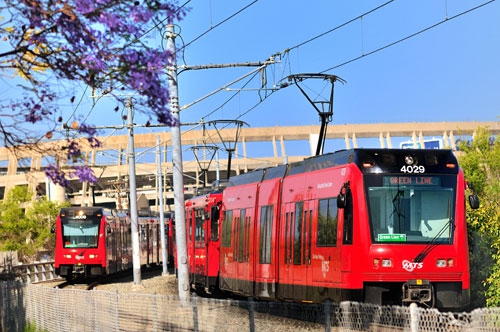San Diego to add 45 Siemens light-rail vehicles to rail system
Written by Kyra Senese, Managing Editor
The San Diego Metropolitan Transit System (SDMTS) has ordered 45 new S70 light-rail vehicles (LRVs) from Siemens for use along its rail system.
Representatives say the new vehicles will improve service on existing rail lines and will also operate along the 11-mile UC San Diego Blue Line extension that is currently in the phase.
“Our relationship with Siemens is a true partnership,” said SDMTS CEO Paul Jablonski. “We work together at every step to design the best-possible vehicle for our system and, more importantly, our riders.”
Siemens says it has provided LRVs to SDMTS since 1981, adding that the latest order will bring Seimens’ total number of vehicles supplied to SDMTS to 244, making the transit system Seimens’ largest U.S. light-rail customer.
SDMTS says it recently sold or retired 71 Siemens U-2 vehicles—the original vehicles used on the first U.S. modern light-rail system.
The new low-floor LRVs will feature a redesigned middle section of the vehicle to improve passenger flow, including enhanced wheelchair accessibility and bicycle storage. SDMTS says it plans to use 36 of the 45 new LRVs on its Mid-Coast Trolley expansion, a new service aimed at better managing current and future travel demands to and from the local University City community. Representatives say the other nine vehicles will be used to boost service frequency on the UC San Diego Blue and Orange lines.
“Siemens is proud to continue our 35-year relationship with MTS by being chosen to build these advanced technology light rail vehicles for the city of San Diego,” said Michael Cahill, president of Siemens Rolling Stock. “These California-built vehicles will help continue MTS’ legacy of outstanding service to its riders and help accommodate riders on their growing rail system.”
The new light-rail vehicles are set to be built at Siemens’ Sacramento, Calif., rail manufacturing center. The vehicles are currently scheduled to arrive in late 2018.





